The Quiet Power of Enamel: Jeweller Emma Wilson’s Landscapes in Miniature
The process of enamelling is one of patience, precision, and quiet transformation. Each piece begins with a bare metal canvas - silver, copper, or gold - carefully cleaned to remove every trace of dust or grease. Fine enamel powder, moistened into a paste, is then applied with care, settling into place before the piece enters the intense heat of the kiln. In moments, the powder melts, its colours blooming into a smooth, glassy skin. Layer by layer, the process builds: creating depth, complexity, and quiet beauty.
For Scotland-based jeweller Emma Wilson, enamelling is more than a technique - it’s the soul of her practice. “The work does not shout; it asks you to pause and think of places elsewhere, to take a moment out of your day to reflect,” Emma writes. Enamel is the perfect medium for expressing the raw, untamed qualities of the Scottish coastline that inspire her work, where steely skies, heavy with ominous clouds, loom over tumultuous seas, and salt spray mingles with grey sheets of rain. The result is jewellery and objects that feel like miniature watercolour paintings, full of atmospheric softness and emotional depth. Soft hues of grey, blue, and green evoke the haziness of memory - like a photograph faded by time.
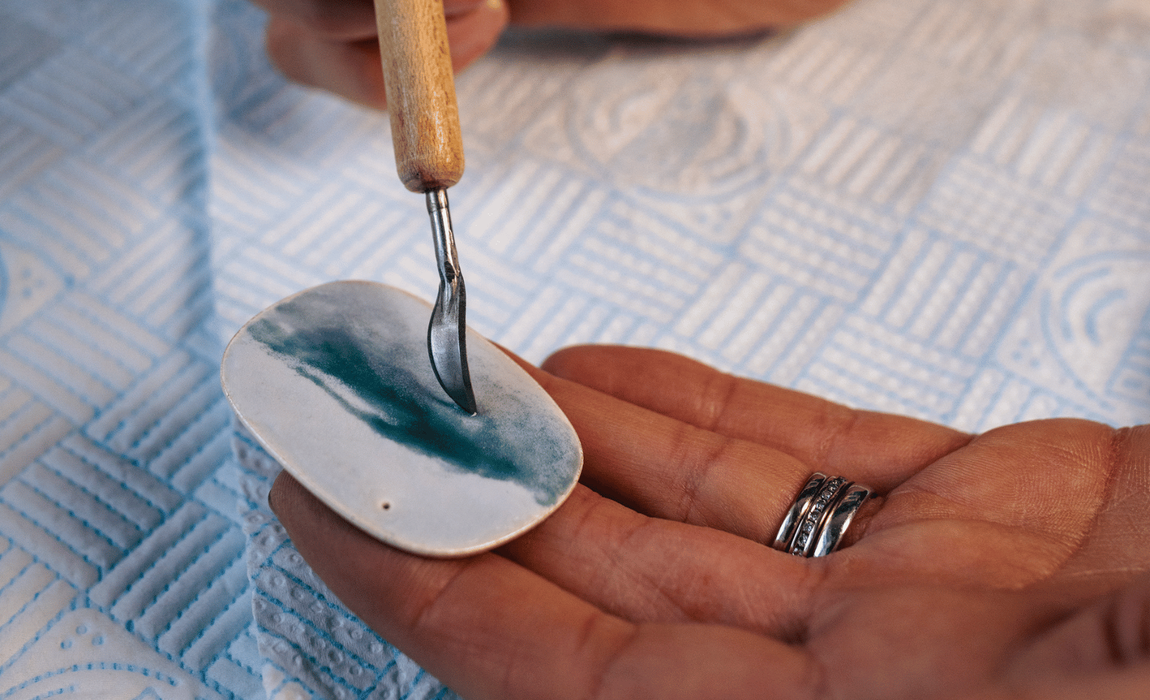
Emma’s journey began with a degree in 3D Design from Gray’s School of Art in Aberdeen in 1995. She later honed her skills in Birmingham’s historic jewellery quarter before returning to Scotland to launch her own brand. Her long-standing relationship with the Goldsmiths’ Centre - from being selected for Shine in 2023 to receiving a Business Catalyst (Small) Grant in 2024 - has supported her creative and business journey. In this interview, Emma reflects on her career so far, her passion for enamelling, and how she captures the untamed spirit of the Scottish landscape in every piece she makes.
Falling in Love with Enamelling
I was always a creative child and we were lucky at primary school because we had the chance to do an enamelling workshop with one of the art teachers. We made small copper pieces with enamel, and that’s when I fell in love with the process. From that point, I knew enamelling was what I wanted to pursue.
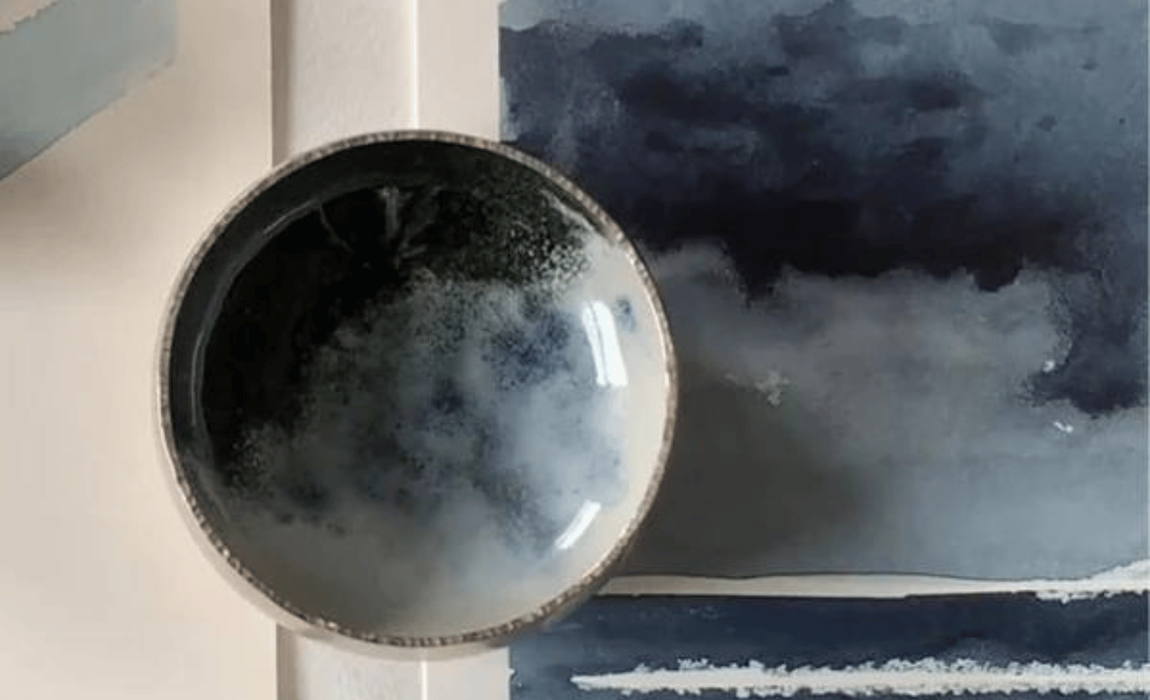
I went on to study 3D Design at Gray’s School of Art in Aberdeen, graduating in 1995. During the course, I specialised in metalwork and enamelling, and I always enjoyed working on both jewellery and larger silversmithing pieces. After graduating, I moved to Birmingham in 1996 for a Design Fellowship - a year-long programme that offered a workshop space, business training, and a supportive community of ten emerging jewellers. It was actually run by Peter Taylor, who helped envision and launch the Goldsmiths’ Centre, [and is the Centre’s director today]. Birmingham was fantastic - being immersed in the jewellery culture, surrounded by suppliers and toolmakers, and having all that expertise concentrated in one area. I really loved it there, especially before the city centre was all redeveloped.
After my time in Birmingham, I had a studio until 1999, when I stepped back to focus on raising my son and daughter. While the kids were growing up, I kept my creativity going at home by making things like sketchbooks and stationery. I always intended to return to jewellery, but with small children and no proper space - enamel isn’t the safest material to have lying around - it took longer than I’d planned. I finally got back to it in 2018 when I was living in Glasgow, and now I’m based in my studio in Aberdeen. It’s been so good to return to enamelling and silversmithing after all those years.
Defining Oneself and Launching a Business
I always knew I wanted to do my own thing - I didn't want to work for anyone else.
“It’s been so important to focus and drill down on how I want my business to be - and to know that’s okay. I gave myself permission to do that.”
Sometimes you wonder if you’re doing the right thing, but having people say, “Yes, that works,” gives you the confidence to go for it. That’s been massive for me - knowing I’m on the right path. My confidence is so much better now than it was two years ago.
It’s difficult to define myself. I probably see myself more as a maker than an entrepreneur or even a designer, although obviously I design all my pieces. A lot of the work that I make is based on my watercolours, so it's almost like art - there's that crossover. So, I’d call myself both an artist-jeweller and a designer-maker.
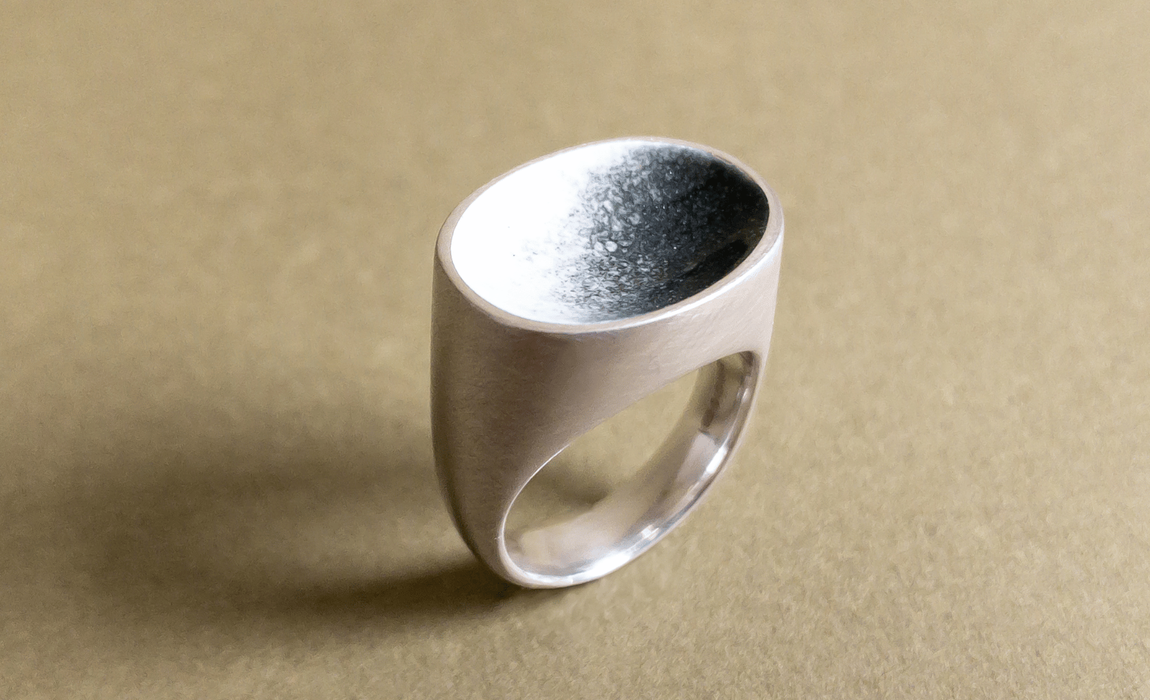
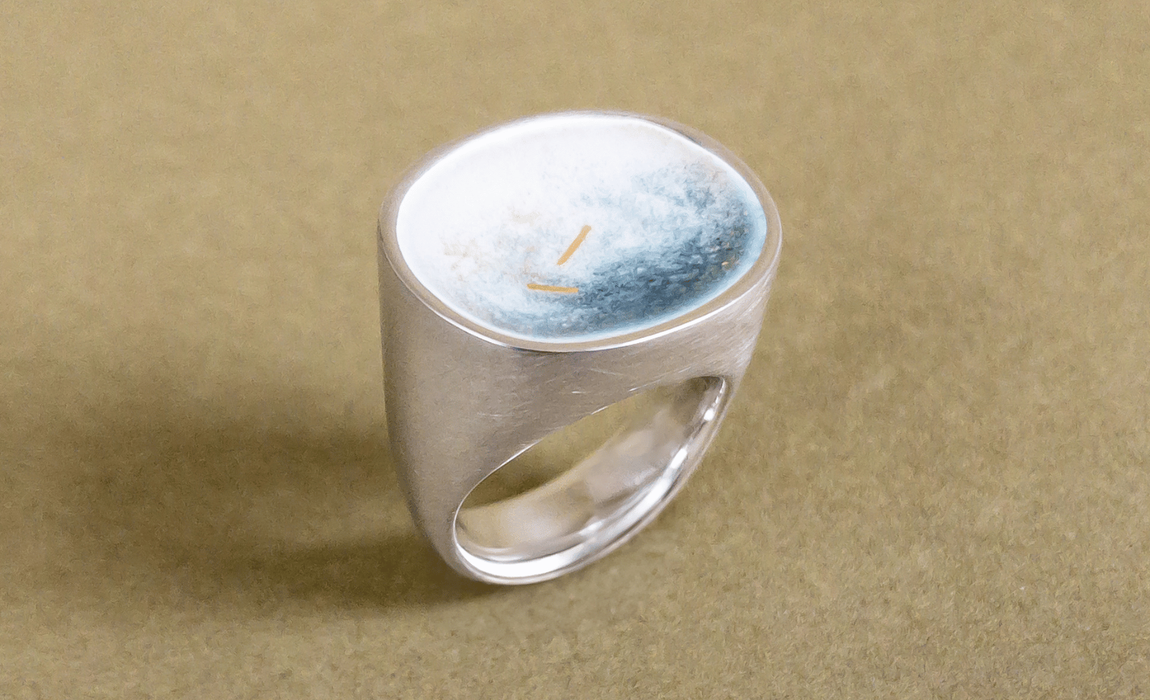
Finding Support: The Goldsmiths’ Centre Journey
I did the Getting Started Online course with the Goldsmiths’ Centre in 2022 - a full week of business training. It was amazing because, although I’d done creative business training before, I always felt like something was missing. It helped me concentrate on creating one-off pieces and smaller collections rather than big collections, which just weren’t for me. That focus led to doing London Craft Week the following year. Although it’s not connected to the Centre, through that I met Centre staff members Charlotte Dew and Greg Parsons, who encouraged me to apply for Shine, for which I was chosen in 2023. Shine was brilliant; it helped me learn how to write about my work, tell the story behind it, photograph it better, and create videos - all of which helped me show and explain the work much more effectively.

Shine was followed by a Business Diagnostic and Advice session with the Goldsmiths’ Centre, which helped me narrow down what I wanted to do and how I saw myself as a maker. Before that, I hadn’t really thought about calling myself an artist-jeweller, but they pointed out that’s what I probably am - and that was really helpful. It made it easier to focus on finding the right audience for my work.
In 2024, I received an Emerging Business Bursary from the Goldsmiths’ Company to showcase my work on a stand at Goldsmiths’ Fair. The same year, I received the Business Catalyst (Small) Grant. Having that combination of financial support, business training, and advice to help figure out what I want to do with my work has been massively helpful. I’m sure it sped up me getting to where I am now. Without it, I don’t think I’d ever have made it into Fair for the first time in 2024 - or if I had, it would have been years down the line. The Business Catalyst (Small) Grant meant I could get moulds made for my cast rings, which has made the process so much quicker. I don’t have to carve each one out of wax individually now. I can just call my caster and ask for a few of a particular design. I wouldn’t have been able to afford that upfront without the grant. I’m very grateful for all the support I’ve had from the Goldsmiths’ Centre.

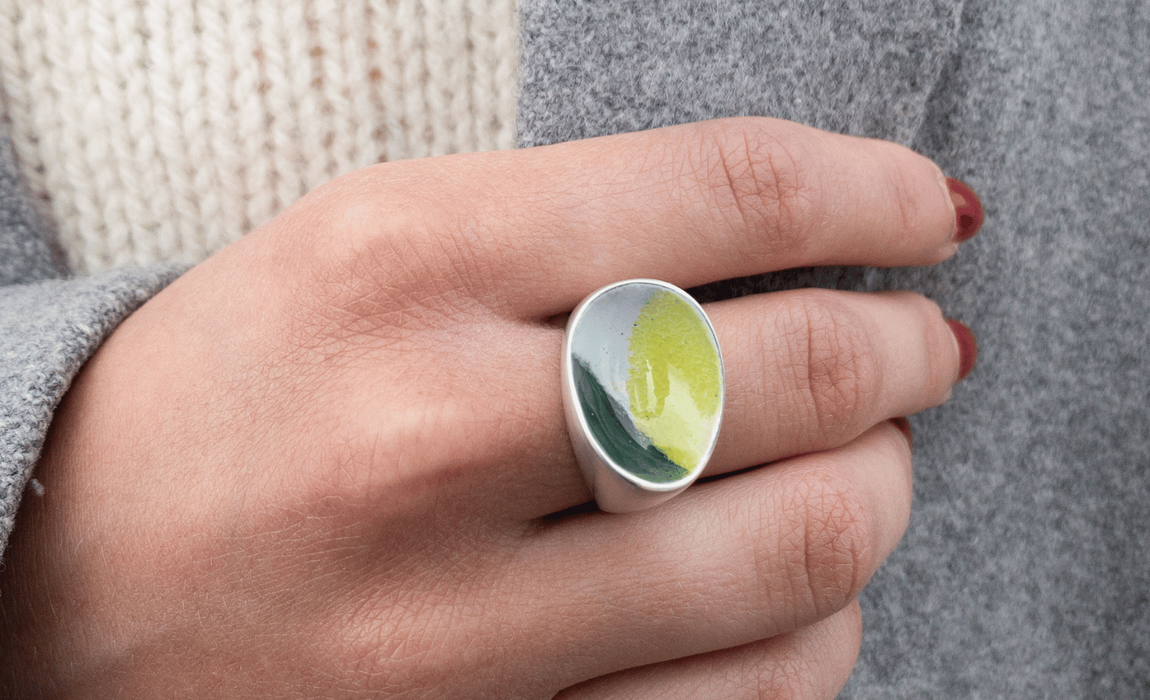
I also won the prestigious Goldsmiths’ Fair Award. On a personal level, it was just amazing. I never expected that at all. It was just such a wonderful thing to happen, I was really honoured. It was external confirmation that I’m doing something right with my pieces. The judges who chose it really connected with the work emotionally, which meant a lot to me - you can't ask for more than that.
Taking part in Goldsmiths’ Fair has definitely accelerated everything, which has been amazing. It gave me an audience who already understood the work - why it’s at that price point and the amount of effort that goes into it. Even though you still explain your process, they come with a more elevated knowledge. And being among all the other makers, people I’ve admired for so long, standing next to them at the Fair - that was a huge boost. It was so much fun; it felt like a massive community.
Finding a Creative Home in Scotland
It’s a lovely community in Scotland, we’re really lucky. There are a lot of jewellers here, and over time you start to get to know people. It’s just great to be able to share knowledge, ask questions, and know that people understand what you’re going through. They get what it’s like to run a business like this. Sometimes your family at home doesn’t necessarily understand all that, so it’s nice to have people who do.
I was fortunate enough, back in 2020, to do the Compass programme with Craft Scotland. That brought together a group of us - I think there were seven or eight of us from all different disciplines - for business training. That was quite early on when I’d just started up again, and to be part of that small group of makers has been wonderful.

I’m based in Artist Studios here in Aberdeen, where we have lots of different makers working across various disciplines. There are a few jewellers, but also people doing all sorts of other things, and that’s really nice. We do a lot together - we’ve got Open Studios this weekend, for example. It’s just lovely to be able to come in and have a cup of tea and a chat about things, rather than always working on your own. You can go and ask, “Does this look really bad?” or “Am I doing the right thing here?” - It’s just really handy to have that sounding board and support.
There is something a bit different about the jewellery community. I don’t want this to sound pretentious, but maybe it’s because of the level of skill involved in what we make - compared to some other beautiful work you see around. There’s just a certain technical side to jewellery and silversmithing. It’s not just making things for the sake of it; you need a breadth of skills to make this kind of work, and not all disciplines require that same range. And honestly, there’s a lot I can’t do in jewellery-making! But maybe that’s part of the camaraderie - knowing that everyone has to reach a certain level of skill, and that shared respect for each other’s abilities. I hope that doesn’t sound big-headed, but there really is a strong skill level in the jewellery world.
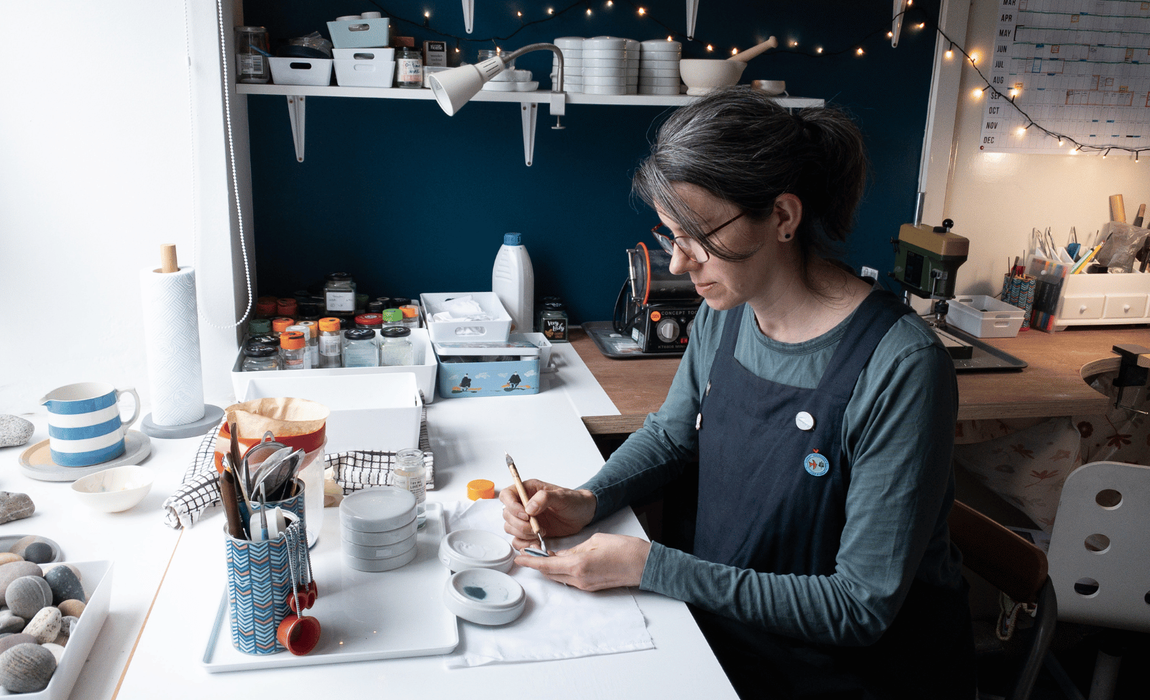
Looking Ahead
My ambition is always to keep making better work. I’m always striving for improvement - in both the built aspects of the piece and the finish. I want to develop the quality and precision of the enamel, and discover how much further I can push it and make it resemble watercolour more closely. It’s about improving the making itself in addition to the design.
The advice I would give to anyone looking to set up or grow their own jewellery business is hang in there, because it can take time. Don't expect it just to happen overnight, although for some people it might, generally, it’s going to be a slow process. Make what you want to make, be unique and don't try to compete with the high street. You've got to do something that's personal and different. Otherwise, you might as well just go work for Accessorize!